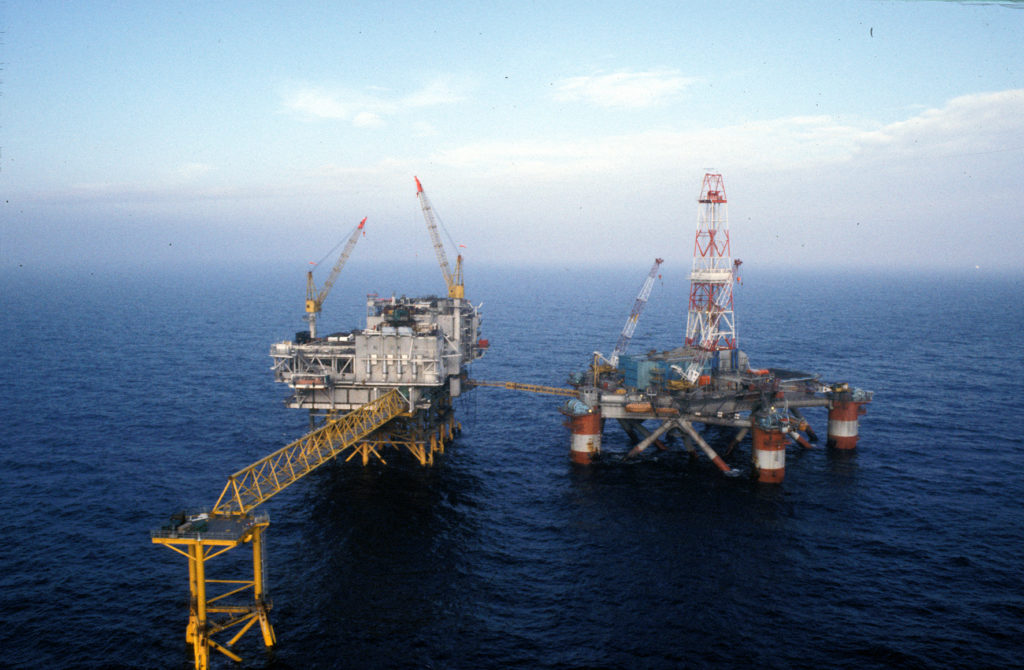What happened to Henrik Ibsen?
- «Henrik Ibsen» had a similar construction as «Alexander L. Kielland».

Phillips had awarded a charter for the flotel to its owner, Stavanger shipping company, A Gowart-Olsen (later Stavanger Drilling) – the first time a drilling rig was used solely for accommodation.
About 200 people working primarily on the Ekofisk tank were quartered there since the Norwegian Maritime Directorate would not approve the temporary structures on the tank for this purpose. That was because they were regarded as a fire hazard.
Later that summer, A Gowart-Olsen acquired another rig of the same Pentagone type and named it Alexander L Kielland. This was also chartered to Phillips.
 henrik ibsen
henrik ibsenIn 1979, it was decided to convert Henrik Ibsen to a flotel with 600 beds at Aker Stord south of Bergen. The completed unit was towed to Tananger outside Stavanger on 26 March for approval.
Plans called for it then to be towed to Ekofisk to replace sister rig Alexander L Kielland, which was due to be brought to land for conversion and overhaul.
However, the latter overturned in the North Sea on 27 March – the day after Henrik Ibsen reached Tananger. A total of 123 lives were lost in Norway’s worst industrial accident.
While Henrik Ibsen was berthed at the quayside in Tananger, it began to heel and developed a sharp list. This occurred on 6 April, 10 days after the Kielland accident.
A full alarm was sounded and the crew of 57 were evacuated. Within minutes, it had listed by more than 20 degrees. This happened while sandblasting was under way on the bracings.
The flotel had been ballasted right up, with the bracings almost out of the water, but the sandblasters wanted part of them to be raised even further.
Trimming was therefore ordered, with one support column being filled with water so that the rig would heel slightly and bring the relevant part of the bracing above the water.
However, a communication failure meant that hatches to the braces were not closed when water was deliberately pumped into one column. It flooded into the braces and other columns and two of the latter sank right to the bottom.
The rig quickly stabilised, and pumping out the water started the following day. Henrik Ibsen began to return to a horizontal position almost immediately.
An investigation of this incident concluded that it was caused by human error, but also found that the rig’s centre of gravity stood too high. Yet another conversion was decided on, this time at the French CFEM yard which had built Henrik Ibsen originally.
Phillips was released from its long-term charter for both Alexander L Kielland and Henrik Ibsen after the accident with the first of these.
In April 1981, however, the company secured a new charter for Henrik Ibsen – this time for a year. The flotel, now approved for 400 beds, would primarily accommodate contractor personnel working on Ekofisk 2/4 B, and was moored with a gangway connection on the latter’s west side.
When this charter expired on 22 April 1982, Phillips no longer had a need for the flotel and the contract was not renewed.[REMOVE]Fotnote: This presentation is based on articles in Stavanger Aftenblad, Rogalands Avis, Dagbladet and VG. Taken from the Alexander L Kielland press cutting collection at the Norwegian Petroleum Museum. MP 1-2-3. Donor Gudmund Gowart-Olsen.
Survived the Alexander L. Kielland disasterWhat caused the Alexander L. Kielland-accident?